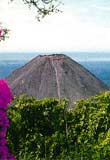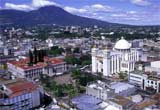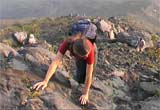
El Salvador is located in the south-western part of Central America and on the coast to the Pacific Ocean and is the only one in the region that does not have a coast to the Atlantic Ocean. It is the smallest country in Central-America and is divided into 14 departments grouped in three geographic zones: west, east and central.
Its territory is full of valleys and mountains. To the north there is the Matapán and Chalatenango Mountain Range where you can find the El Pital, the highest peak in the country. A volcano chain crosses the country from east to west. El Salvador has a vast amount of natural, cultural and archaeological richness. You can learn and enjoy its beaches, archaeological sights, artisan towns and cities with great heritage values.
The Salvadoran people originate from a mixture of Spanish colonizers and the local indigenous population. With a mysterious and exotic past, thanks to the ancient Mayas, it’s a country with people who defend their ancestral traditions and a capital that evolves with the latest technology. In different residential areas and tourism points there is a variety of services and an infrastructure that introduces modernism and preferences.
On the hillside of a volcano you can find the city of San Salvador which was founded in 1525. It is an industrial and commercial city with a rapid urban growth. One can tour its countless number of art galleries, churches, National Palace, among others. Close to the city you can find the Saburo Mirao Park, Botanical Gardens, National Zoo and the old San Salvador. The legacy of ancient civilizations can be found like the town of Panchimalco, with an indigenous population.
The Departments of Cuscatlán, Cabañas, Chalatenango are located in the central region with important colonial towns where a visitor can appreciate its cultural and historic past, through is colonial  constructions found in its exuberant vegetation. constructions found in its exuberant vegetation.
Other important Departments are the La Libertad, La Paz with its popular beaches El Sunzal and Costa del Sol.
Santa Ana Department is located in the western part of the country, with its main city as the second most important in the nation. You can find the Cerro Verde National Park, Coatepeque Lake and the Santa Ana volcano. In the Sonsonete Department a vacationer can visit the artisan towns of Nahuizalco, Izalco, Juayúa, Izalco volcano, beaches like Cóbanos. In Ahuachapán there is Apaneca, the highest mountainous town in the country; El Imposible, huge Tropical Park, land of forests, rivers and mountains.
The Departments of Usulután, San Miguel, La Unión and Morazán are found in the eastern part of the country. In these departments you can find diverse attractions like Espino Beach, el Cuco, Tamarindo, Barillas Marina Club and Lempa River. Visit indigenous communities like Cacaotera, pre-Colombian town; Guatajiagua, indigenous community, authentically Lenca or Pomona and famous for its black pottery. The Gulf of Fonseca in the Unión, is a magnificent place for fishing and enjoy the beautiful and rustic islands of the Gulf, belonging to the volcanic archipelago of which 11 of the islands belong to Salvadoran.
Lovers of pre-Hispanic culture can visit the Mayan ruins as another option. The San Andres ruins, Joya de Cerén located in the Department of La Libertad; and Tazumal in Santa Ana are other place to visit. These are perfect examples of ancient Mayan settlements, with findings that include sophisticated tombs, pyramids, palaces and other objects. The immense archaeological richness allows a vacationer to disconnect from the real world and submerge in the indigenous community which still remains a mystery.
|